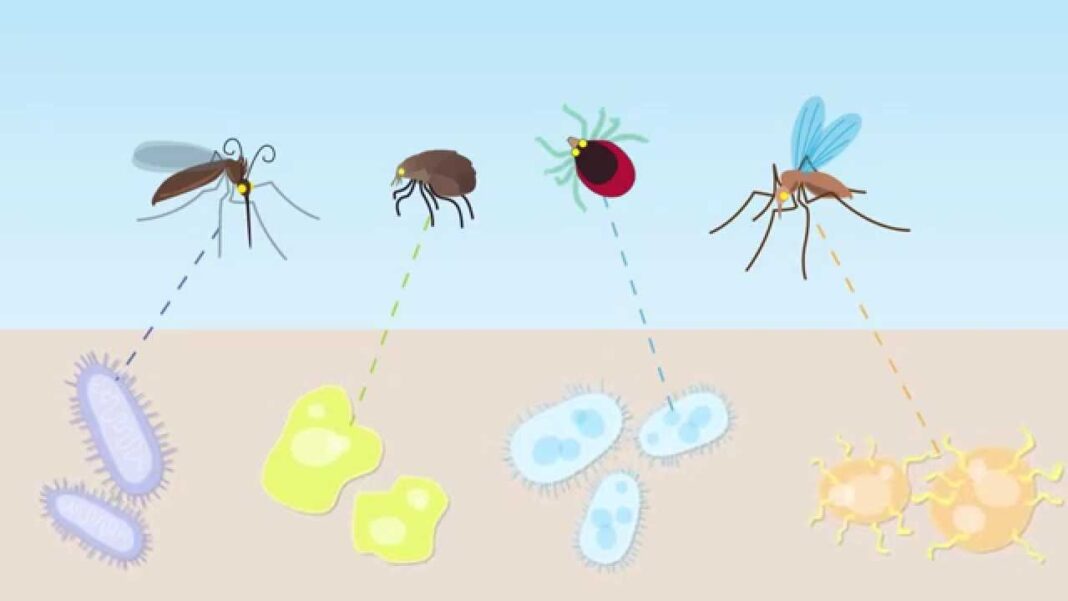Dr. Muhammad Uzair Mukhtar
Floods are the most common type of natural calamity in the world. The experts expect the flooding events to increase in frequency and severity in various regions as climate change brings about sea level rises and shifts in rainfall patterns. In Pakistan, like in other parts of the world, flooding has emerged as the most prevalent meteorological disaster. Recent floods in 2020 and some previous floods in the last 20 years include the 2010 flooding which struck many parts of Pakistan leading to disruption of socio-economic activities, extensive damage to property, agriculture & livestock, infrastructure, communication facilities, and loss of life. Flood makes people displacement, which would be further complicated with poor sanitation. Settling in crowded shelters in the absence of clean water and inaccessibility to health care services makes people more exposed to getting infections. These risk factors in favour of infectious diseases offer suitable conditions for an increased incidence of infections after flooding.
The outbreak of infectious diseases is a serious concern after flooding. Extreme floods pose multiple direct and indirect health risks such as drowning, injury, the outbreak of gastroenteritis, respiratory infections, poisoning, and epidemics of vector-borne diseases such as malaria, dengue fever, and leishmaniasis. Vector-borne diseases are the ones that result from an infection transmitted to humans and other animals by blood-feeding arthropods, such as mosquitoes, ticks, and fleas. Weather transitions have a considerable impact on vector-borne diseases and the arthropod population. Pakistan has already shown the association of monsoon rains with outbreaks of dengue fever.
Floods may lead to severe changes in the environment’s equilibrium and provide an ideal breeding ground for these disease vectors. Often, the reproduction, development, behaviour, and population dynamics of arthropod vectors are affected by changes in precipitation. Initial heavy flooding can destruct vector breeding habitats and reduce their populations, but some days after flooding, stagnant water turn into an ideal breeding site for arthropod vectors such as mosquitos. Flooding events are followed by a proliferation of mosquitoes, the carriers of malaria, dengue fever and other infections. Under these vulnerable circumstances, the increase in mosquito population density can enhance transmission and increases the risk for human disease, when coupled with expanded human exposure to mosquitoes after a disaster living in substandard conditions.
Leishmaniasis another important neglected tropical disease and is transmitted by the bite of female sandflies. It is more common in displaced individuals living in overcrowded shelters where the risk of sand fly bite and transmission is increased. If we view back in the past, Pakistan noted a greater number of cutaneous leishmaniasis cases during the year 2011-12 after the 2010 flood episode.
Such natural catastrophes can pose long-lasting effects on public health and will have more consequences in the future. Public health interventions are extremely necessary for curtailing vulnerability to infections because of flooding. The interventions range from those carried out before, during, and after flooding. Public health policy-makers dealing with flood-related disasters must incorporate provisions addressing vector-borne disease. One of the primary public health interventions for reducing transmission of diseases in the affected community according to the World Health Organization is vector control. Since vector control is effective in rendering the environment unfavourable for the survival, development, and reproduction of the vector. In the control of mosquito, indoor residual spraying and the use of insecticide-treated bed nets can be useful in reducing the outbreak and spread of malaria and other mosquito-borne diseases. Comprehensive surveillance and risk assessment, early warning systems, emergency planning, and well-coordinated collaborations are essential in reducing future vulnerability to infectious diseases following flooding.
Based on preceding reports of vector-borne diseases from different parts of the country, exclusively in flood-affected localities, this year an upsurge of infection is foreseeable. It can affect hundreds of lives in destructed areas and demands urgent attention to curb the consequences. Enhanced coordination and collaboration among stakeholders such as between the Department of Public Health and Livestock, emergency relief providers, researchers and local community is needed in setting up a condition for better handling of outbreaks of vector-borne diseases that follow flooding disaster.
The writer works at Lab of vector and vector-borne diseases, Chinese Academy of Agricultural Sciences, Beijing, China. He can be reached at [email protected]








